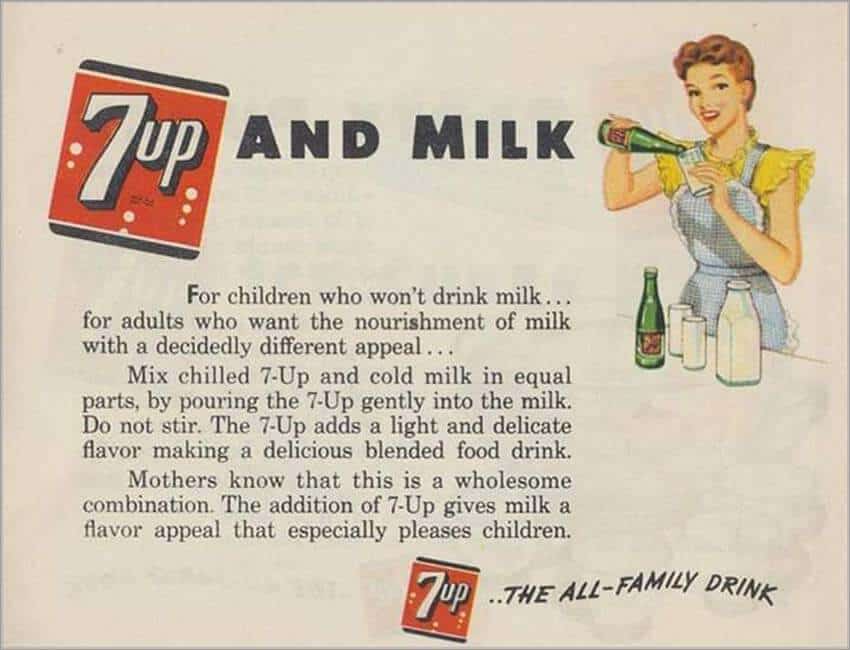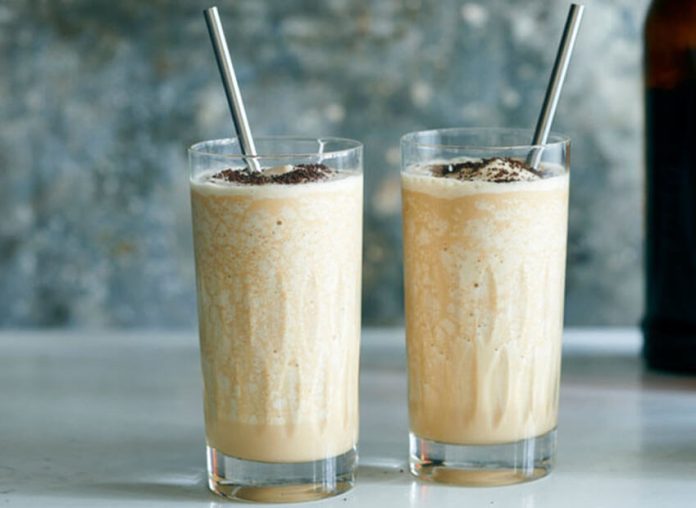A popular 1960s advertisement featured a smiling, aproned Mom pouring 7-Up soda into a glass of milk with the slogan, “For children who won’t drink milk … for adults who want the nourishment of milk with a decidedly different appeal … Mothers know that this is a wholesome combination.”
Hmmm.
Suffice to say that’s not the case, although I don’t go so far as thinking cow’s milk is as evil as some make it out to be. Local friends call packaged milk agua blanca (white water). It’s easy to understand why. Pasteurized, homogenized and pumped full of vitamins and extra proteins, commercial brands like Lala are a far cry from the natural goodness of real, actual milk.
What exactly is lactose-free milk? Why is milk always homogenized and pasteurized? Is raw milk OK to drink? Let’s explore some of these questions.
Lactose is a naturally occurring sugar found in milk and milk products; for some folks, it’s difficult to digest. Lactose-free milk is usually made by adding the enzyme lactase to the milk, which breaks down the lactose so the body can digest it better. Some brands completely filter lactose out of the milk. There’s no noticeable taste difference between lactose-free and pasteurized, homogenized milk.

Pasteurization is the simple process, used all over the world, of heating and cooling milk to specific temperatures to kill harmful bacteria. While some say it changes the nutritional content or flavor of milk, scientific evidence says the contrary.
Homogenization is another story; it breaks down natural (and delicious) fat molecules to disperse them more evenly throughout the milk. Some say these microparticles are absorbed directly into the bloodstream, leading to an increased risk of heart disease; tests remain inconclusive. In terms of taste and mouthfeel, though, homogenization practically destroys both. If you’ve had raw or pasteurized-not-homogenized milk or cheeses, you know what I mean.
Most commercial milk has all the milkfat skimmed off right away. It’s then added back in varying percentages, depending on whether the end result will be “whole” (entera), “reduced-fat” (leche lite), etc. Skim milk has no milkfat at all and can seem sweet because of this. Commercial whole milk contains between 3.25% and 4%. Cream categories are all about milkfat: half-and-half (12%), light cream (20%) or heavy cream (34% to 38%).
The whipping cream found in Mexican supermarkets has about 34% milkfat but is also full of additives to make it whip better and preservatives to prolong its shelf life. Serious cooks, check out this dried heavy cream powder with 72% butterfat. I’m fortunate to have a local dairy here where I can buy pasteurized-not-homogenized milk and dairy products. Each liter has about two inches of thick, buttery cream on top. My cats — who won’t touch packaged milk — happily lap it up.
One of my favorite recipes for using milk is Japanese Milk Bread — tender, fluffy, flavorful loaves that make beautiful sandwiches or toast. The base is tangzhong, a warm flour and water paste. (This is what panko breadcrumbs are made from.)
Drop Biscuits
- 1½ cups flour
- 2 tsp. baking powder
- 1 tsp. salt
- 1 stick cold unsalted butter (4 oz.), cut into ¼ -inch cubes and refrigerated
- ¾ cup whole milk
Preheat oven to 400 F (200 C). Line baking sheet with parchment or grease with butter. Whisk together flour, baking powder and salt. Working quickly, cut butter into flour until it resembles coarse meal. Add milk. Stir with a fork until the mixture just comes together into slightly sticky, shaggy dough.
For small biscuits, use a teaspoon to mound walnut-sized balls of dough onto a prepared baking sheet. For large biscuits, mound ¼-cup balls of dough. Bake until golden brown, about 15 minutes for small biscuits and 20 minutes for large ones. Cool slightly; transfer to wire rack and serve.
Mashed Cauliflower
Milk’s the secret to making this dish taste like what you have in restaurants.
- 1 large (2-pound) cauliflower, cut into small florets
- 2 cups whole milk
- 2 garlic cloves, smashed and peeled
- 4 sprigs fresh thyme, plus more for garnish
- Salt and pepper
- 3 Tbsp. Mexican crema or sour cream

In medium saucepan over medium-high heat, combine cauliflower, milk, garlic, thyme and 1 tsp. salt. When mixture begins to bubble around the edges, reduce heat to low. Simmer, stirring occasionally, until cauliflower is very tender, 10–15 minutes.
Drain cauliflower, reserving milk. Discard thyme sprigs. Return cauliflower and garlic to pot and mash with a potato masher or purée with an immersion blender until smooth.
Add reserved milk 1 Tbsp. at a time, mashing or blending in between, until cauliflower reaches desired consistency. (About ¼ cup milk total.)
Stir in sour cream/crema; season with salt and pepper.
Jamie Oliver’s Chicken in Milk
- 1 (3-4 lb.) whole chicken
- Salt and pepper
- ¼ cup unsalted butter
- ¼ cup olive oil
- 1 small cinnamon stick
- 10 whole cloves garlic, skins on
- 2½ cups whole milk
- 15-20 fresh or dried sage leaves
- 2 lemons
Heat oven to 375 F (190 C). Season chicken generously with salt and pepper. Using an oven-safe pot that the chicken will fit snugly inside of, melt butter and olive oil. When butter melts and starts to foam, place chicken in the pot and sauté, turning every few minutes, until browned all over.
Turn heat to low, remove chicken from pot onto a plate. Drain off all but a few tablespoons of fat from pot. Add cinnamon stick and garlic to pot; cook 2 minutes. Return chicken to pot along with milk and sage.
Using a vegetable peeler, cut wide strips of skin off the lemons; add them to pot. Place pot in oven; bake approximately 1½ hours, basting occasionally, until chicken is tender and cooked through and sauce has reduced to be thick and curdled. (If sauce is reducing too quickly, cover pot halfway with foil.) Serve over rice, pasta or potatoes.
Frozen Irish Coffee
- ½ cup vanilla ice cream
- 1¼ cups whole milk, frozen in an ice cube tray
- 4 oz. chilled strong coffee
- 2 oz. brandy
- 2 oz. coffee liqueur
- ¼ tsp. fresh coffee grounds, for garnish
Mix ice cream, frozen milk cubes, chilled coffee, brandy and coffee liqueur in a blender on high until ice is crushed and drink is smooth.
Divide between highball glasses and swirl a pinch of coffee grounds on top of each.
Janet Blaser is the author of the best-selling book, Why We Left: An Anthology of American Women Expats, featured on CNBC and MarketWatch. She has lived in Mexico since 2006. You can find her on Facebook.
